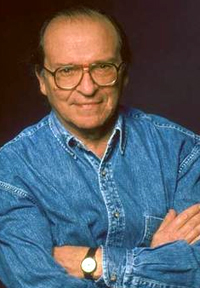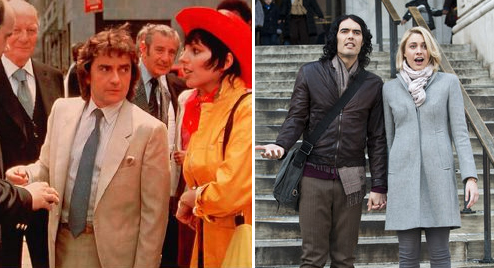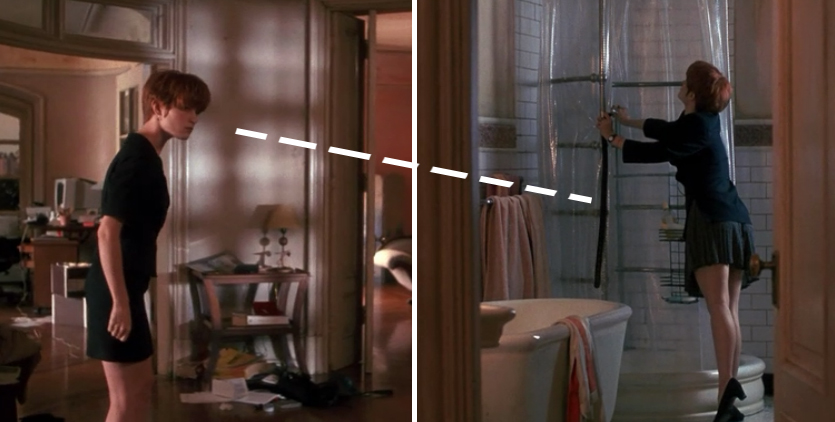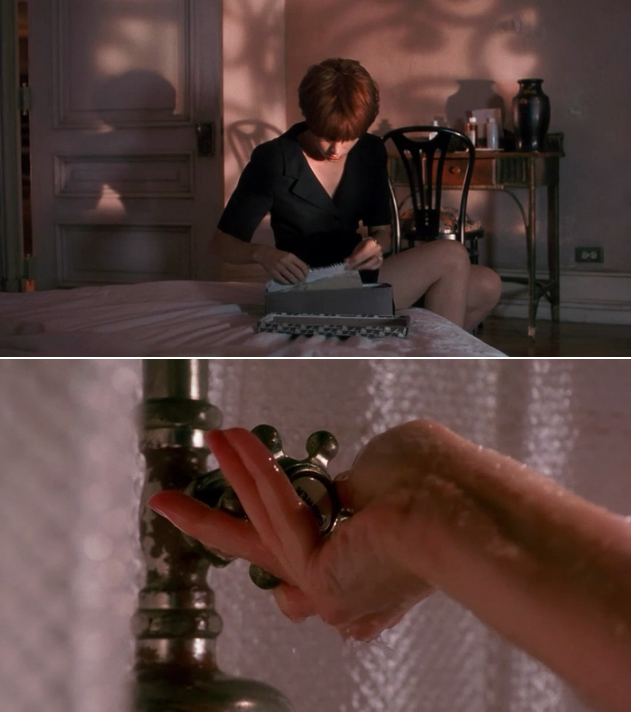Cast This: "From Here To Eternity" Redux
 Saturday, April 9, 2011 at 8:01PM
Saturday, April 9, 2011 at 8:01PM 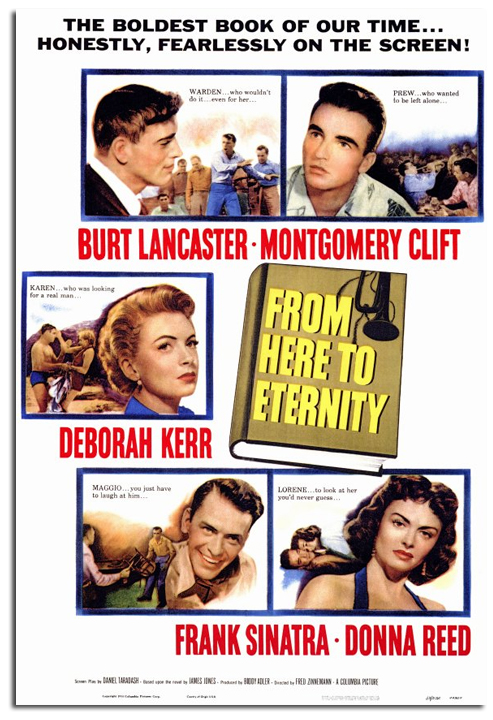 By now you may have heard the news that an uncensored version of the famous novel From Here To Eternity, a "director's cut" to speak in film parlance, is being released on e-books next month? It will restore profanity and some homosexual content to the military epic; In the 1950s, you didn't ask and they certainly didn't want any telling (or cussing).
By now you may have heard the news that an uncensored version of the famous novel From Here To Eternity, a "director's cut" to speak in film parlance, is being released on e-books next month? It will restore profanity and some homosexual content to the military epic; In the 1950s, you didn't ask and they certainly didn't want any telling (or cussing).
"THE BOLDEST BOOK OF OUR TIME... HONESTLY, FEARLESSLY ON THE SCREEN!"
It's maybe a bit corrupt of me to play a casting game with a remake I've never rooted for -- it's a terrific movie as is -- but "Cast This" is fun, isn't it? And in the case of a this new author's cut, why not? Movies have been remade for far stupider reasons. And I don't feel too bad at proposing a remake of 1955's Best Picture From Here To Eternity because it's already been remade once as a television miniseries in the late 70s.
The reinserted homosexual content would be mostly in reference to offscreen events but it got me to thinking about the movie and the fact that Frank Sinatra, an able actor and massively popular singer won an Oscar for the role that contains the content. (Basically it amounts to him being gay for pay, a hustler.)
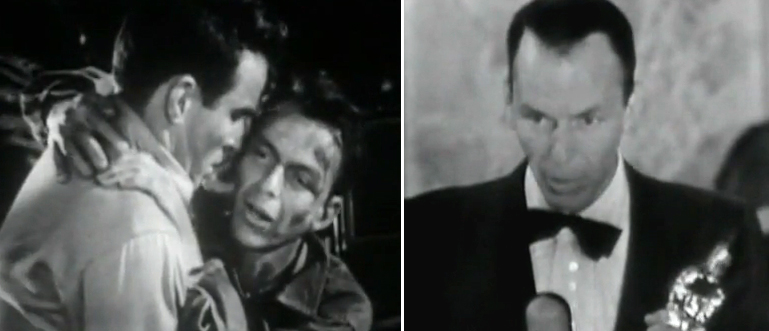 Monty & Sinatra in From Here To Eternity | Sinatra's Oscar Win
Monty & Sinatra in From Here To Eternity | Sinatra's Oscar Win
Meanwhile Montgomery Clift, an actual homosexual and one of the defining actors of the 20th century, never won one. What a world. I don't know how close Monty ever came to winning in his four times at bat, but it would make sense that he had a reasonable shot with From Here to Eternity. It was a wildly popular film and won eight other Oscars. It's also one of those rare films where every principle member of the cast was nominated.
CAST THIS
So who would you place in the five main roles?
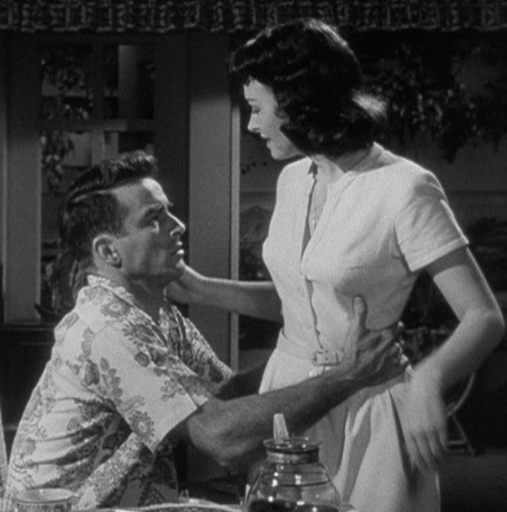 Prewitt & Lurene, bickering loversPrewitt (The Monty part) is a stubborn principled transfer from the Bugle corps who used to box but refuses to fight anymore... even when provoked violently. He takes up with a nightclub girl and keeps getting dragged into Maggio's troubles, some violent. This actor should be handsome and believable as a former fighter and be a bit of an enigma.
Prewitt & Lurene, bickering loversPrewitt (The Monty part) is a stubborn principled transfer from the Bugle corps who used to box but refuses to fight anymore... even when provoked violently. He takes up with a nightclub girl and keeps getting dragged into Maggio's troubles, some violent. This actor should be handsome and believable as a former fighter and be a bit of an enigma.
Lurene (the Donna Reed part) is a girl of somewhat shady reputation -- and conflicted about it -- who works at the nightclub where all the soldiers go for entertainment. She wants to be something other than what she is and return to the mainland (if I remember correctly?)
Maggio (the Sinatra part) is the undisciplined volatile Private and loyal friend to Prewitt, who has a hustling past and gets in bar fights and is later violently abused by a superior officer.
Karen (The Deborah Kerr part) is the Base Commandes's neglected and unfaithful wife. She takes up with the Sergeant under her husband and is eager for him to become ambitious so she can divorce her husband and marry him without, one presumes, losing her way of life. She has a great line I've never fully understood which I've written about before when she's flirting with the Sergeant and invites him in.
You're doing fine sergeant. My husband is off somewhere and it's raining outside and we're both drinking now. You probably only got one thing wrong: the lady herself. The lady is not what she seems. She's a washout if you know what I mean. And I'm sure you know what I mean.
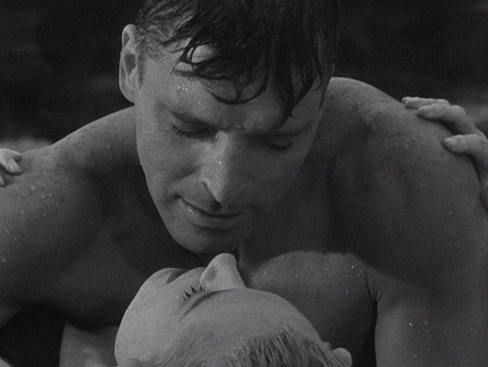 Sgt Warden and his Captain's WifeI don't!
Sgt Warden and his Captain's WifeI don't!
Like every other character in the story, she's pretty conflicted about her own desires and action.
Sgt. Warden (The Burt Lancaster part) is a man who's conflicted about cheating on his Commanding officer by bedding his wife. This actor should be masculine, confident someone you'd take orders from but who is complacent about being a cog in the machine. So a leader but not too much of one.
Obviously Sgt. Warden and Karen have to have sizzling chemistry for their legendary beach sex scene.
GO!



